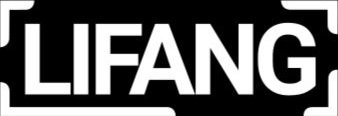What is additional workload?
At LiFang we believe in allowing the client to get the rendering/animation right without having to be limited by the number of revisions. We encourage clients to make all the necessary revisions before moving on to the next stage during the Rendering or Animation process.
For the majority of our clients, there wouldn’t be any additional workload, but in the cases where additional workload does occur, here are some of the most common reasons:
Major changes in model design AFTER model stage will lead to additional hours of remodeling.
Primary lighting or other aspect changes requiring hours of rendering, for example, day to night time.
project cost breakdown
In the Rendering or Animation project, the cost of the projects can be broken down to 40% Modeling and 60% Rendering.
For example, an $700 rendering, $280 (40%) cost is attributed to the modeling cost, and the remainder $420 (60%) is related to the rendering cost.
Additional Workload Cost Breakdown
The cost of the additional workload depends on at which stage the cost occurred.
Modeling (40%)
Example: During Rendering Stage, the client requested to change a significant number of furniture, requiring a 20% additional remodeling workload.
40% of the project cost x 20%* additional workload
($700 x 40%) x 20% = $56 additional remodeling workload
Rendering (60%)
Example: During the Rendering Stage, the client requested to fully open the window blinds to let in the sunlight, requiring a 30% additional rendering workload due to lighting changes.
60% of the project cost x 30%* additional workload
($700 x 60%) x 30% = $126 additional rendering workload
* The % of additional workload varies from project to project due to the complexity of each project.
We hope this breakdown will give you a better understanding of our process when we are evaluating and calculating costs for the projects we work on with you. We believe open communication and transparency is the best method for efficient project management.
Understanding more about Screen Resolution(PPI) vs Printing Resolution (DPI)
With all the various screen resolutions such as 480p, 720p, 1080p, 1440p, 2K, 4K, 8K, and the list is only getting longer. How do I know whats the best resolution for me and my project? We’ll attempt to explain why screen resolution and print resolution is relevant in the context within the Architectural Industry.
The two common concepts we have to understand are the Screen Resolution which is measured in pixels (Pixel Per Inch), and the Print Resolution which is measure in DPI (Dot Per Inch).
The screen resolution is usually expressed in measurements of width x height, for example, 1080p is actually 1920 pixels across and 1080 pixels down, this is crucial when you need to display the rendering or animation in a digital screen.
The Print Resolution or DPI measures the number of dots in printed inch, this is crucial when you need the renderings in physical format regardless is for marketing, presentation, or billboard.
Rendering Projects
How does Screen Resolution impact your Rendering?
It does not, With a standard 4K rendering, there is no limit on what kind of devices or digital display screen for viewing such as smartphone, tablet, computer, or TV displays.
How DPI affects Renderings, ie Printing the Rendering?
A resolution of 300 DPI gives you the maximum size that you can use for your photo for printing. The standard 4K rendering we’re offering is only at 72 DPI, without getting into the mathematical calculation, but you will be able to print on letter size (8.5 x 11) paper at 300 DPI, which is suitable for most marketing purposes.
Source: RGB Spectrum
Animation Projects
How does Screen Resolution impact your Animation?
At LiFang we offer various resolution sizes for Animations, our standard resolution is 720p (1280x720). Which resolution is best for your project heavily depends on the type of digital display media and size.
720p is best for smaller devices such as smartphone, tablet, and computers with closer viewing distance.
1080p is best for larger TV screens and projectors with view distance between 5 to 15 feet.
4K the highest quality resolution is great for the large or small screens, at a closer viewing distance within 10 feet.
How DPI affect Animation?
In most cases DPI will have no impact on Animations unless you want to print rendering of the animation out for marketing purposes, then please read How DPI affects Renderings?
The free screenshots from our animation are only at the resolution of the animation itself.
At LiFang we’re offering our clients the highest quality photo-realistic renderings standard at 4K (4096 x 2160) resolution and standard 720p (1280 x 720) for all our animations. For more information please visit our Interior Rendering, Exterior Rendering, 360 Tour or Animation Services pages.
Understanding Our Rendering Process
We put this Rendering Workflow video together to help clients such as you to better understand LiFang Rendering Process. Some of the original artwork and designs were provided by Tim Gorter of Interdisciplinary Architecture.
Tim Gorter is a licensed architect with over 15 years experience in the architecture and construction industries. His skill with design, programming, site analysis, strategic facility planning, and design and construction management has benefited a wide spectrum of residential, commercial, industrial, and institutional clients.
Please visit our Exterior Services and Interior Services page for more projects such as this.


